Laboratories
Digital-Twin Infrastructure Science for Operation and Visualization in Engineering Resilience (DISCOVER) Laboratory
The DISCOVER lab is a research and educational hub developing a new generation of models and tools to perform digitalization of the built environment, with the ultimate goal of providing science-based methodologies for the resilience assessment of large-scale infrastructure systems. By blending Augmented and Extended Reality environments, advanced remote sensing techniques, structural health monitoring and numerical simulations, the DISCOVER lab advances science and technology in Infrastructure Resilience, tackling one of the major engineering challenges of the next decades. The adoption of advanced digitalization techniques is poised to dramatically change the way civil infrastructure is planned, designed, constructed, maintained, and decommissioned. The cutting-edge research performed in the lab can be directly translated into practice by means of 1) meaningful collaborations with stakeholders and federal agencies, and 2) students’ engagement (with specific focus on undergraduates) and outreach activities. Advanced visualization techniques, in fact, have been proven to significantly increase the potential for communicating complex scientific concepts by means of accessible and immersive virtual environments.
Equipment and Capabilities:
The lab is composed of two spaces, one measuring 8.2m x 5.0m, housing 6 high-end workstations and a Virtual/Extended Reality (VR-XR) development space. A state-of-the-art XR-3 Varjo Head Mounted Display (HMD) is housed within the VR-XR development space, capable of rendering immersive Extended Reality environments by blending virtual (digital) and real-life objects in the simulations, making use of the high-resolution RGB and depth cameras mounted on the exterior of the headset.
The second space, measuring 6.0m x 5.5m is a laser-grade dark room housing a high-fidelity holographic table for 3-dimensional visualization and manipulation of digital twin models. The Axiom Holographic table housed in the DISCOVER Lab is a state-of-the-art holographic table capable of rendering 3-dimensional holographic images of maximum size 5ft x 5ft x 6ft. It is currently the only commercially available holographic solution that allows multi-user interaction with a given environment, while also allowing for advanced interactive presentations to third-parties via an external screen.
Equipment housed within the DISCOVER Lab also includes different platforms for performing Reality Capture, namely: (1) a Geodetics Geo-MMS Mapping system, comprising a Velodyne HDL-32E LiDAR sensor and a Sony α1000 Digital Camera for LiDAR-RGB Data Fusion, capable of performing both aerial and terrestrial operations; (2) a heavy lift payload Inspired Flight IF-1200 Unmanned Aerial System; (3) a terrestrial Leica BLK-360 laser scanner equipped with spherical (360 x 300 calibrated spherical images) and thermal (FLIR-based longwave infrared) cameras.
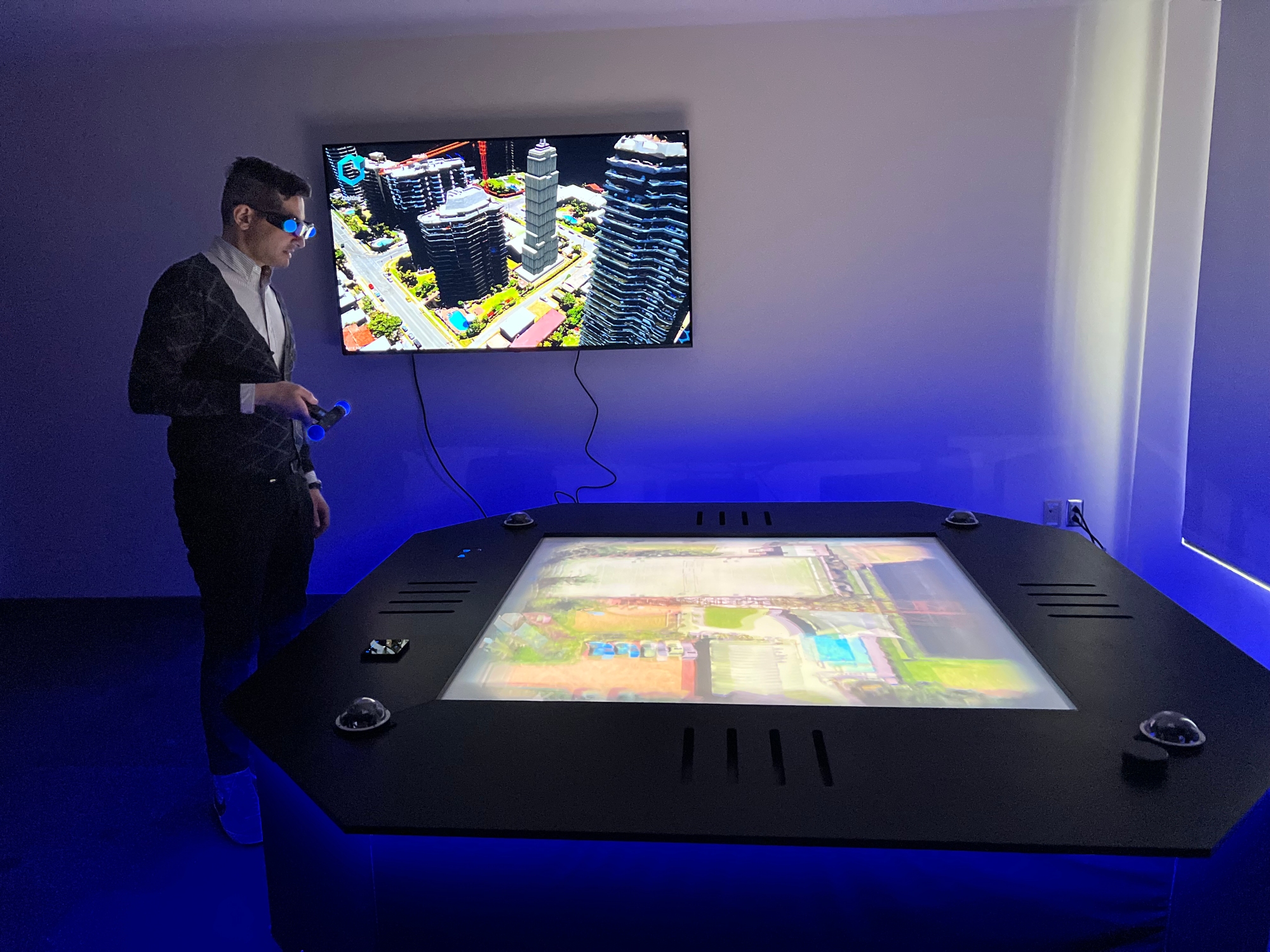
ENVIRONMENTAL ENGINEERING LABORATORY
The Environmental Engineering Laboratory within the Department of Civil and Environmental Engineering at the University of Pittsburgh provides research and analytical capabilities in environmental science and engineering. The department has unique facilities for instrumentation, investigative experiments, and experiments too large for individualized spaces. These spaces also house an analytical laboratory capable of performing nearly any environmental chemistry or microbiological experiment. Instrumentation available for use includes: Hewlett Packard GC/Mass Spectrometer, Perkin Elmer Thermogravimetric Analyzer (TGA-7), Hewlett Packard Gas Chromatograph with PID/ECD detectors, Perkin Elmer Gas Chromatographs with FID and ECD detectors equipped with HP 3365 Chemstation, and Tekmar LSC-2000 purge and trap, Perkin Elmer GC with Thermal Conductivity detector, Dionex 4500 Ion Chromatograph with conductivity detector, HP 1800 Series HPLC with fluorescence and UV detectors, Ionics TOC Analyzer and Organic Carbon Analyzer, CEM Digesting Microwave , Perkin Elmer 1100B atomic absorption spectrophotometer for flame analysis, and Perking Elmer 4100 ZL graphite furnace AA for lower detection limit, Perkin Elmer Lambda-2 UV/visible scanning spectrophotometer, Perkin Elmer 599 Infrared Spectrophotometer, Bausch & Lomb B&L Spec-20 spectrophotometers, assorted specific ion probes, Microtrac 3500 Particle Size Analyzer, Microtox toxicity analyzer, N-CON systems WB-512 computerized aerobic/anaerobic respirometer, and additional routine supporting instrumentation. Further, each faculty member has roughly 1500 ft2 of highly customized laboratory space either in the Mascaro Sustainability Center or on the CEE homefloor to support their research activities.
The Environmental Engineering Laboratory collaborates with the Dominion Environment & Energy Center, with faculty of the Department of Chemical and Petroleum Engineering, the Graduate School of Public Health in assessment of health effects, mutagenicity and toxicity potential studies, and with non-University entities for joint activity in environmental science and technology developments.
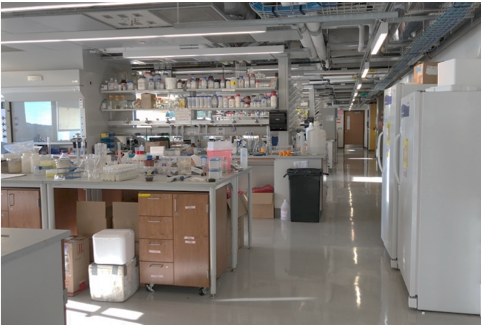
GEOTECHNICAL ENGINEERING LABORATORY
The Geotechnical Engineering laboratory, which is computer controlled, includes static triaxial and direct shear apparatuses for both soils and rocks, a dynamic triaxial apparatus, consolidometers, constant and variable head permeameters, a resonant column apparatus, an ultrasonic velocity testing apparatus, and a shaking table. In addition the laboratory houses standard equipment for Atterberg Limits determination, and grain size analysis.
HYDRAULIC FRACTURING AND GEOMECHANICS LABORATORY
The Hydraulic Fracturing and Geomechanics Laboratory at the University of Pittsburgh supports research into hydraulic fracture propagation, rock mechanics, and soil behavior . It includes: 1) a true-triaxial cell, including hydraulic pump and pressure control, capable of applying up to 20 MPa of stress independently in each of 3 direction to specimens measuring up to 300 mm on a side, 2) multi-axis video monitoring that is enabled by viewing ports in the loading platens of the triaxial cell, backlight sources built into the loading platens, and digital video cameras 3) a syringe pump used for injecting fluid for hydraulic fracturing, 4) sensors for monitoring injection fluid pressure and temperature, 5) Hoek-type triaxial cells for 35 mm and 150 mm specimens including pore pressure platens for permeability testing, 6) 16 channel MISTRAS Acoustic Emission (AE) detection system, 7) 8 channel pulse and 16 channel receive MISTRAS Ultrasound Tomography (UT) system.
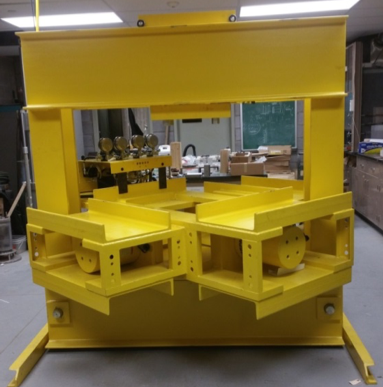
LABORATORY FOR NDE AND SHM STUDIES
The Laboratory for NDE and SHM studies is a new facility established in September 2006. The facility consists of about 750 square feet of dust-free space, which contains the state-of-the-art equipment in ultrasonic testing and acoustic emission (AE) technology. The laboratory includes:
- Acoustic Emission Instrumentation: one Physical Acoustics Corporation 4-cahnnel PCI/DSP system with waveform module including a notebook computer and AE-Win software; acoustic emission pico, WD, and S14 AE-transducers.
- Ultrasonic Testing Instrumentation: one Tektronix AFG3022 arbitrary function generator (2 output channels); Two Lecroy 4-channels oscilloscope one of which has a PC incorporated running under Windows XP); Commercial broadband Olympus NDT-Panametrics Ultrasonic Transducers; one Olympus NDT-Panametrics high power (max 400 Volts) signal generator. Immersion transducers.
- Optical devices: one high energy pulsed laser; one optical table; lenses, mirrors, posts for high precision optical experiments.
- Modal Testing Instrumentation: 8-channel, line-powered, ICP® sensor signal conditioner; four 1/4 in. pre-polarized condenser microphone, free-field, 4 mV/Pa, 4 to 80k Hz (± 2 dB); Modally Tuned® Impulse Hammer w/force sensor and tips, 0 to 100 lbf, 50 mV/lbf (11.2 mV/N); one 086D80 Miniature Instrumented Impulse Hammer w/force tips, 0 to 50 lbf.
- Miscellaneous Equipment: one National Instrument-PXI 1042Q chassis with arbitrary function generator and multifunction Data Acquisition System; two FLIR Infrared Cameras; five unidirectional and one omnidirectional Audio-Technica microphones; one LCR for electro-mechanical impedance method; five personal computers.
PAVEMENTS MECHANICS AND MATERIALS LABORATORY
The Department of Civil and Environmental Engineering Pavement Mechanics and Materials Laboratory (PMML) has developed into an all encompassing laboratory equipped to perform a full range of tasks including the casting, curing and testing of everything from concrete specimens to full-scale pavements. The 2700 sq. ft. facility features the latest equipment in both destructive and non-destructive testing of portland cement concrete.
Housed within the lab are two environmentally controlled rooms. The 1007 cu. ft. room can be adjusted to replicate a wide range of environmental conditions for curing portland cement concrete test specimens while the 630 cu. ft. room is maintained at a constant temperature and humidity for determining the drying-shrinkage properties of concrete in accordance with ASTM-157.
The laboratory is equipped with everything needed for measuring basic aggregate properties such as the gradation, absorption capacity and specific gravity, as well as, more detailed characterizations such as determining wear resistance using the Los Angeles abrasion machine or running a micro-deval test. A 5.5 sq. ft. concrete mixer and all other necessary tools for casting concrete specimens are available, as well as equipment for measuring the properties of fresh concrete.
The laboratory is equipped to test the more basic properties of hardened concrete, such as, strength, elastic modulus and Poisson's ratio along with the more elaborate testing equipment needed for measuring such things as the dynamic modulus, thermal coefficient of expansion, fracture toughness of concrete and the surface texture of fractured slabs using a laser profiler and a linear traverse equipment. Some of the sample preparation equipment available in the laboratory includes a concrete saw, core machine and a fume hood for sulfur capping.
Additionally, the laboratory houses a Baldwin compression machine that can be used to apply loads up to 200,000 lbs and a Test Mark compression machine with a capacity of 400,000 lbs. A multitude of tests can also be performed using the MTS TestStar Controller. The controller can be used for performing dynamic testing using a closed-loop servo hydraulic test machine. This system can be fed by either a 10 gpm or 60 gpm hydraulic pump.
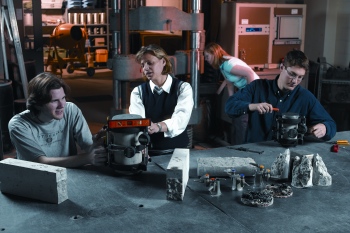
SUSTAINABILITY AND GREEN DESIGN LAB
The SGD group represents the next generation of interdisciplinary education and research in environmental science, engineering, and sustainability. Through our research and outreach, we tackle some of the most pressing concerns of the 21st century. In the lab, we can do the following:
- Energy use in buildings using Infrared Thermography and building sensor network
- Algae-derived biofuels
- Greenhouse research on growing Biofuels on Marginal Lands
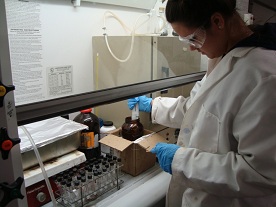
WATKINS-HAGGART STRUCTURAL ENGINEERING LABORATORY
The Watkins-Haggart Structural Engineering Laboratory is the facility at the heart of the experimental structural engineering research efforts at the University of Pittsburgh. This unique facility is located in the sub-basement of Benedum Hall on the main campus of the University of Pittsburgh in Oakland. The Lab is a 4000 square foot high-bay testing facility with a massive reaction floor. The high-bay testing area is serviced by a 10 ton radio controlled bridge crane and other heavy material handling equipment.
As a compliment to the reaction floor, the Lab also has an extremely versatile self-contained reaction frame. Loading for full-scale testing is provided by servo-controlled hydraulic actuators whose capacities range from a few hundred pounds up to 300,000 pounds. The actuators are controlled by state-of-the-art MTS digital closed-loop servo-hydraulic control systems and hydraulic power is supplied by two 60 gpm 3000 psi hydraulic power units. The Laboratory is also home to three universal test machines: a) 20,000 lb capacity with hydraulic grips; b) 200,000 lb having a 6 foot clear opening; and c) 300,000 lb having a 14 foot opening. Two concrete cylinder test machines having capacities of 250,000 and 500,000 lbs are also available. The laboratory has a number of computer controlled data acquisition systems that allow for the automated reading and recording of over 130 discrete channels of instrumentation. The lab has full-scale nondestructive evaluation equipment and field-testing equipment suitable for a variety of in situ test programs.
Since 2004, the laboratory has specialized in conducting large scale fatigue testing at load ranges up to 50,000 pounds. To date, fatigue tests totaling over 100 million load cycles have been conducted. The largest tests conducted by the Watkins-Haggart lab team where the 2006 tests of a pair of 90 foot long, 70 ton long prestressed girders recovered from the collapsed Lake View Drive Bridge.
Laboratory Director: Kent A. Harries, PhD, FACI, P.Eng.
